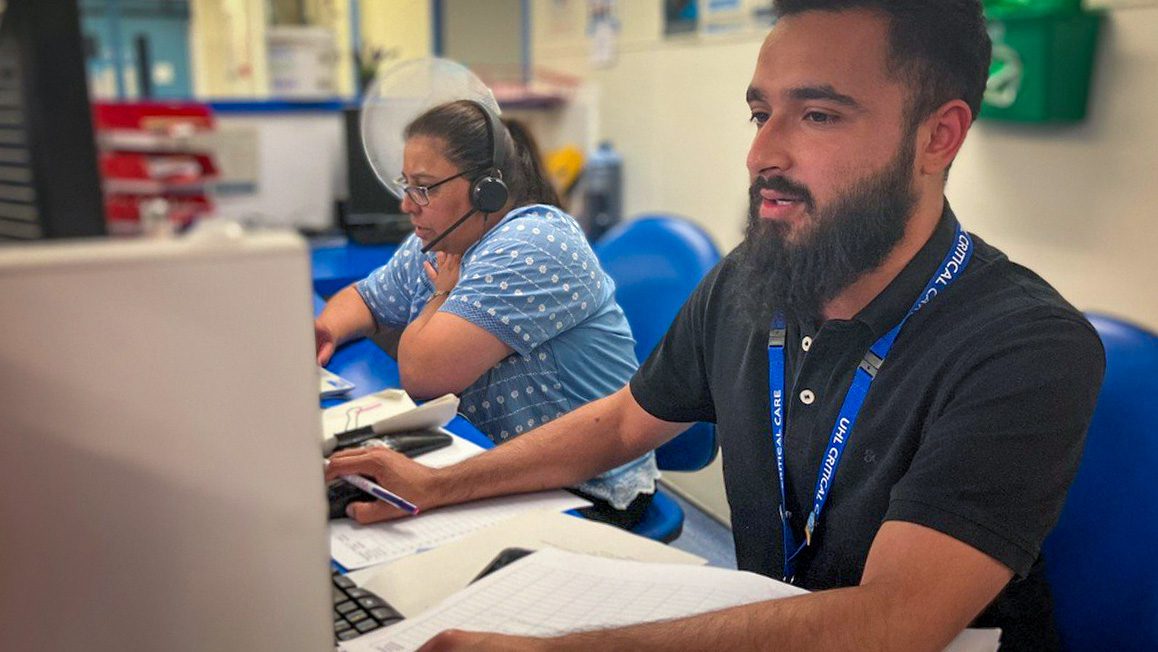

Prior to implementing Nervecentre’s case notes and care plans, DBTH faced challenges with disparate paper-based documentation systems. CCIO, Dr Mike Whiteside, explained that “Different directorates used varying forms and terminology for collecting the same data, leading to duplication of effort, inconsistencies and potential inefficiencies. Over the years, more pieces of paper get created and there’s no oversight of them. The next thing you know, you’ve got multiple ways of doing the same thing.”
This fragmented approach made it difficult for clinicians to access information quickly and comprehensively, impacting both patient care and administrative processes. A key challenge was aligning the various directorates and specialties on a unified approach to documentation.
Damien Kelliher, Lead Digital Practitioner at DBTH

Nervecentre allows clinicians to access all relevant patient information within a single form, eliminating the need to navigate between different systems. This streamlined access to information, including AHP notes, specialist nurse input, and scanned documents, and empowers clinicians to make more informed decisions at the point of care. The ‘form within a form’ feature proved particularly valuable, allowing access to related information without cluttering the primary workflow.
Nervecentre significantly reduced the time spent on documentation, with estimates of up to half an hour saved per four-hour session and 11 hours per week on stroke ward rounds alone. This freed up clinicians’ time to focus on patient care.
The platform facilitated better collaboration among multidisciplinary teams (MDTs). Physiotherapists, for example, reported being able to review patient information remotely, improving their workflow and allowing for more effective bedside care.
Standardised documentation and improved information sharing contributed to a better patient experience by reducing repeated and redundant questioning and ensuring consistent care across different specialties.
Nervecentre’s structured data entry simplified the clinical coding process, allowing coders to work more efficiently and even remotely. The standardised format reduced ambiguity and improved coding accuracy, potentially impacting reimbursement.
By reducing frustration associated with inefficient documentation processes, such as hunting for paper notes, Nervecentre contributed to a more positive working environment for clinicians.
The trust deployed Nervecentre’s case notes and care plans across 19 inpatient wards on the same day. While initially ambitious, this strategy proved highly effective in minimising the period of dual paper and digital systems.
The transition to digital documentation marked a significant cultural shift, moving away from traditional paper methods. Staff engagement and acceptance were crucial to the success of this change. Along with the trust’s Medical Director, Dr Whiteside championed the project. Engaging with all directorates achieved agreement on standardised data collection processes. This top-down approach facilitated buy-in and ensured alignment across specialties.
Dr Mike Whiteside, CCIO at DBTH
Damien Kelliher added; “Nervecentre is designed to be intuitive, reducing the need for extensive training. Staff could easily navigate and use the system, facilitating a smoother transition.”
The high level of enthusiasm among clinical staff helped with rapid adoption.
The successful implementation of Nervecentre care plans and case notes to digitise inpatient wards at DBTH demonstrates the importance of strong clinical leadership, thorough preparation, and a user-friendly digital platform in driving successful digital transformation within healthcare.
The trust’s experience highlights the potential of Nervecentre to improve efficiency, enhance collaboration, and ultimately deliver better patient care. The combination of robust preparation and an intuitive system proved highly effective in achieving rapid and widespread adoption.